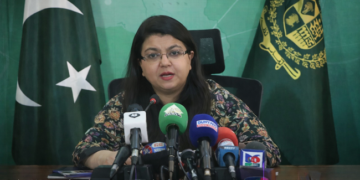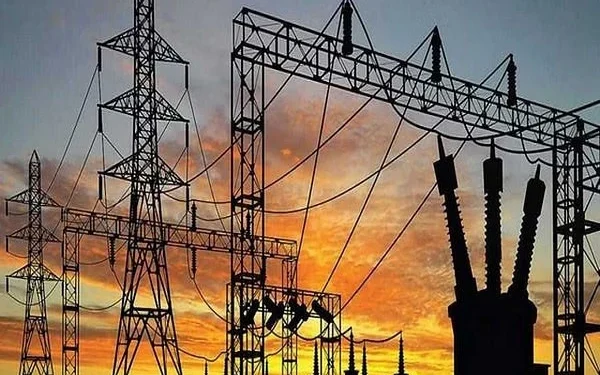Overview: Relief on the Horizon for Power Consumers in Pakistan
Islamabad — In a welcome development for millions of electricity consumers across Pakistan, there is a strong possibility of a significant decrease in electricity tariffs in the coming months. According to official sources, electricity prices could drop by as much as Rs. 1.75 per unit, bringing long-awaited relief to households and businesses burdened by high utility bills.
The move comes after the Central Power Purchasing Agency (CPPA) submitted a formal request for a tariff reduction to the National Electric Power Regulatory Authority (NEPRA). The proposal, made under the quarterly tariff adjustment (QTA) mechanism for the fourth quarter of the 2024–25 fiscal year, is currently under review, with a final hearing scheduled for today.
If NEPRA approves the request, it would translate into nationwide savings of over Rs. 53.39 billion for electricity consumers, including those served by government distribution companies (DISCOs) and K-Electric.
Background: What is a Quarterly Tariff Adjustment (QTA)?
Understanding the Power Pricing System in Pakistan
Pakistan’s electricity pricing system is governed by a multi-tiered regulatory framework, where various stakeholders, including generation companies, distribution companies, and regulatory authorities, play key roles.
A quarterly tariff adjustment (QTA) is a mechanism implemented by NEPRA that allows for periodic reviews and adjustments in the consumer-end electricity prices. These adjustments are made to account for fluctuations in various costs, such as:
- Fuel prices
- Capacity charges
- Transmission and distribution losses
- Exchange rate fluctuations
- Changes in power purchase agreements (PPAs)
In simple terms, the QTA helps balance the gap between the cost of power procurement and the actual revenue earned through billing, ensuring that distribution companies remain financially viable.
Details of the CPPA’s Request
What’s in the Proposal?
According to CPPA’s petition, a reduction of Rs. 1.75 per unit has been proposed for the electricity consumed during the months of August, September, and October. For some months, especially September through November, the relief could go as high as Rs. 2.10 per unit, subject to NEPRA’s final approval.
This reduction has been proposed after assessing lower fuel costs, improved generation efficiency, and better-than-expected recovery rates by distribution companies.
The CPPA’s petition states that the favorable fuel mix, which now includes a higher share of hydropower and renewable sources, has helped reduce the overall cost of power generation. Moreover, global fuel prices, particularly of coal and furnace oil, have stabilized or declined slightly, providing further room for downward revision in electricity tariffs.
Who Will Benefit from the Price Reduction?
Scope of the Adjustment
If NEPRA approves the proposed reduction, the following categories of consumers will benefit:
- Domestic Consumers: Households across Pakistan will see lower monthly bills, particularly those in the middle-income and lower-income brackets.
- Commercial and Small Business Owners: Reduced electricity costs will help small shops, traders, and service providers manage operational expenses.
- Industrial Units: Manufacturing and export industries will see reduced production costs, potentially improving competitiveness.
- K-Electric Consumers: Residents of Karachi, served by K-Electric, are also expected to benefit, as the adjustment would be applicable across both government and private distribution entities.
It is important to note, however, that this relief will not apply to lifeline consumers—those who consume less than 50 units per month—as they are already being charged subsidized rates.
NEPRA Hearing and Next Steps
When Will a Final Decision Be Made?
The NEPRA authority is scheduled to hold a public hearing today, during which stakeholders—including consumer representatives, government officials, and energy experts—will present their arguments and comments on the CPPA proposal.
Following the hearing, NEPRA will analyze the data, evaluate fuel cost variations, and assess consumer impact before issuing a formal decision. If approved, the tariff reduction could be reflected in monthly bills starting as early as August 2025.
According to insiders, NEPRA’s decision will be announced within a few days after the hearing, subject to no significant objections or procedural delays.
Economic Significance: A Timely Relief Amid Inflation
Why the Tariff Cut Matters Now
The potential reduction in electricity prices comes at a time when the country is grappling with persistent inflation, particularly in the energy and food sectors. Over the past year, electricity prices have seen frequent increases due to:
- Rising fuel import costs
- Currency depreciation
- Heavy capacity payments to IPPs (Independent Power Producers)
- Circular debt exceeding Rs. 2.6 trillion
These rising energy costs have contributed significantly to inflationary pressure, reducing the purchasing power of ordinary citizens.
A cut in electricity rates could provide welcome relief to consumers and help ease inflation slightly. For industries, especially in sectors like textiles, cement, and fertilizers, reduced energy costs could improve margins and export competitiveness.
Energy Sector Reforms and Future Outlook
Is This the Start of Sustainable Power Pricing?
While this proposed adjustment is a short-term relief, analysts argue that long-term energy pricing stability depends on comprehensive sectoral reforms. Key reform areas include:
- Reducing reliance on imported fuels
- Encouraging investment in renewable energy
- Improving governance in DISCOs
- Controlling transmission and distribution losses
- Restructuring agreements with IPPs
The government has also launched various initiatives under the Alternative & Renewable Energy Policy 2019, aiming to increase the share of renewables to 30% by 2030. If successfully implemented, such measures could reduce the country’s exposure to volatile global fuel markets.
Public Reactions: A Cautious Optimism
Citizens and Industry Respond
On social media and in interviews with local media outlets, consumers have welcomed the news of a potential rate cut but remain skeptical about its implementation.
“We’ve seen such announcements before, but the relief doesn’t always show up on our bills,” said Arif Khan, a shopkeeper in Rawalpindi. “If this becomes a reality, it will be a huge relief for us during these tough economic times.”
Industry representatives have also voiced support. “Lower electricity tariffs can enhance production efficiency, reduce export costs, and help restore growth,” said a spokesperson from the All Pakistan Textile Mills Association (APTMA).
Conclusion: A Step in the Right Direction for Consumers and the Economy
The proposed reduction in electricity tariffs by up to Rs. 1.75 per unit is a potentially impactful move that could bring relief to millions of consumers nationwide. If approved by NEPRA, it will help ease financial pressure on households and businesses alike.
While this development is encouraging, experts emphasize that sustainable energy affordability requires broader reforms, investment in renewable sources, and more efficient management of the power sector.
For now, consumers eagerly await NEPRA’s decision, hoping that the anticipated relief becomes a reality in their upcoming electricity bills.

























